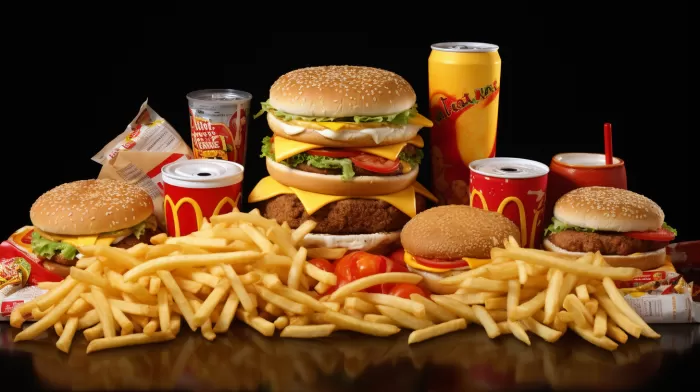Is it possible to feel full and still be starving? The answer is yes, and it’s known as full-belly starvation. This phenomenon occurs when you consume a diet high in calories but low in nutrition.
The standard American diet, as represented by the U.S. Department of Agriculture’s My Plate, is often very high in calories yet extremely low in nutrients. Despite feeling full, your body is actually starving for proper nutrition. This deceptive situation creates a breeding ground for health problems, including obesity, heart disease, cancer, and diabetes.
Understanding Nutrient Density
So, what is at the heart of full-belly starvation? The primary factor is a concept called nutrient density. This refers to the amount of nutrients contained in a food relative to its calorie content. Foods with a high nutrient density provide a high number of essential nutrients per calorie consumed.
A study of the standard American diet shows that it has very low nutrient density. Additionally, high calorie foods are generally the ones with the lowest nutrient density.
Nutrient-density scores range from 0 to 100, with 100 representing the highest nutrient density. The scores are based on the number of identifiable phytochemicals, antioxidant activity, and total vitamin and mineral content.
If you want to address full-belly starvation and improve your health, the goal is to increase your nutrient-density score to make your diet more nutrient-rich.
How to Improve Your Nutrient-Density Score
Here are some examples of foods with a high nutrient-density score:
- Dark leafy vegetables: kale, mustard greens, collard greens, Swiss chard, watercress, spinach, arugula. (100 points)
- Other green vegetables: romaine, bok choy, cabbage, Brussels sprouts, asparagus, broccoli, string beans, snow peas, green peas. (95 points)
- Non-green nutrient-rich vegetables: beets, eggplant, mushrooms, onions, radishes, bean sprouts, red and yellow bell peppers, radicchio, cauliflower, tomatoes, artichokes, raw carrots. (50 points)
- Fresh fruits: strawberries, blueberries, other berries, plums, oranges, melons, kiwifruit, apples, cherries, pineapple, peaches, pears, grapes, bananas. (45 points)
- Beans: lentils, kidney, great northern, adzuki, black, pinto, split peas, edamame, chickpeas. (40 points)
- Raw nuts and seeds: sunflower, pumpkin, sesame, flaxseed, almonds, cashews, pistachios, walnuts, pecans, hazelnuts. (30 points)
By incorporating more of these nutrient-dense foods into your diet, you can work to combat full-belly starvation and boost your overall health. Keep in mind that moderation is important, and you don’t need to completely eliminate less nutrient-dense foods. Adjusting your overall diet to focus on high nutrient density is a positive step towards better health.
Increasing Nutrient Density in Meals
- Power up your breakfast: Begin your day with a nutrient-dense meal by incorporating a variety of colorful fruits and vegetables. Try mixing in spinach, kale, or avocado into a breakfast smoothie, or enjoying a hearty whole-grain oatmeal topped with berries and nuts.
-
Step up snacking: Instead of reaching for that bag of chips, choose a more nutrient-dense option like carrots with hummus, apple slices with almond butter, or a handful of nuts and seeds.
-
Veggie-filled dinners: Make vegetables the star of your dinner plate. Load up on lightly steamed or roasted greens, such as broccoli, spinach, or Brussels sprouts. Pair them with lean proteins like beans, fish, or chicken and a delicious homemade sauce to maximize nutrient density.
-
Desserts with benefits: Satisfy your sweet tooth with a more nutritious option like a bowl of mixed berries, dark chocolate-covered almonds, or a fruit- and nut-packed energy bar.
-
Drink wisely: Avoid sugar-laden sodas and juices, and opt for water, green tea, or freshly squeezed fruit juice without added sugar. These options not only provide hydration but also offer extra nutrients and antioxidants for better health.
The Road to Improved Health
By adjusting your diet to include more nutrient-dense foods, you can fight against full-belly starvation and promote better health. Remember, small steps can make a significant difference. Start by incorporating one or two high nutrient-density food options into your daily meals and gradually build from there.
Over time, you’ll find that you’re not only feeling fuller but also enjoying better overall health and vitality. Say goodbye to full-belly starvation and hello to a healthier and more satisfying way of eating.



